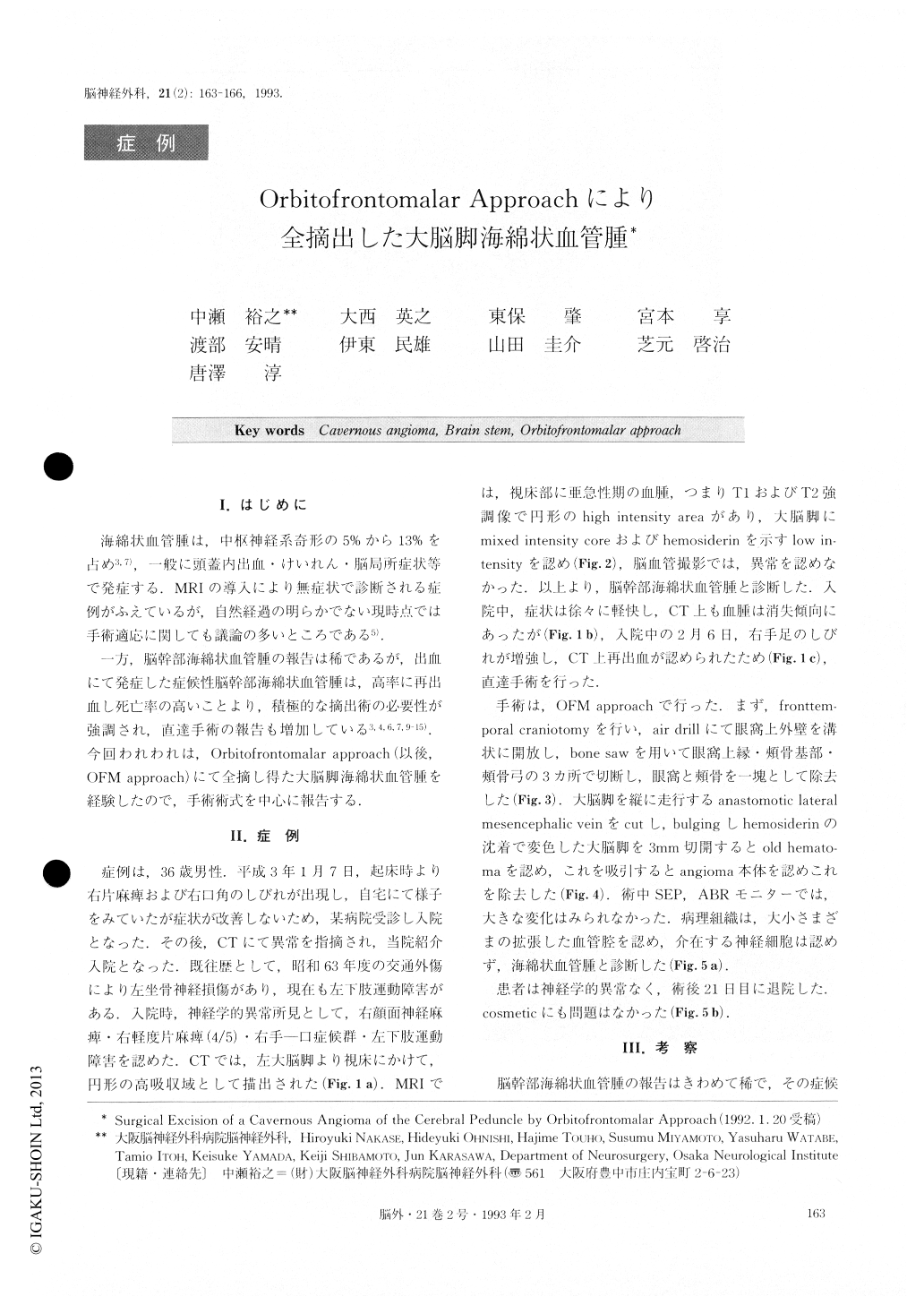Japanese
English
- 有料閲覧
- Abstract 文献概要
- 1ページ目 Look Inside
I.はじめに
海綿状血管腫は,中枢神経系奇形の5%から13%を占め3,7),一般に頭蓋内出血・けいれん・脳局所症状等で発症する.MRIの導入により無症状で診断される症例がふえているが,自然経過の明らかでない現時点では手術適応に関しても議論の多いところである5).
一方,脳幹部海綿状血管腫の報告は稀であるが,出血にて発症した症候性脳幹部海綿状血管腫は,高率に再出血し死亡率の高いことより,積極的な摘出術の必要性が強調され,直達手術の報告も増加している3,4,6,7,9-15).今回われわれは,Orbitofrontomalar approach(以後,OFM approach)にて全摘し得た大脳脚海綿状血管腫を経験したので,手術術式を中心に報告する.
A case with cavernous angioma at the left cerebral peduncle was cured surgically.
A 36-year-old male was admitted with complaints of right facial palsy, right motor disturbance and cheiro-oral syndrome. CT revealed a round high-density mass in the left cerebral peduncle and thalamus. Angiography showed no abnormality. MRI showed a round high-intensity mass on TI- and T2- weighted image in the left thalamus, which meant hematoma at a subacute stage and mixed-intensity core in the left cerebral peduncle, which was cavernous angioma. Symptoms disappeared, and high-density also disappeared gradually, but rebleed-ing occurred. Because of this, an operation was per-formed by the orbitofrontmalar approach. Hematoma and angioma were removed under ABR and SEP moni-tor, which showed no abnormality during the operation. Histological examination of the surgical specimen re-vealed that the abnormal vessels were cavernous angioma.
The postoperative course was uneventful without cosmetic problems.

Copyright © 1993, Igaku-Shoin Ltd. All rights reserved.


